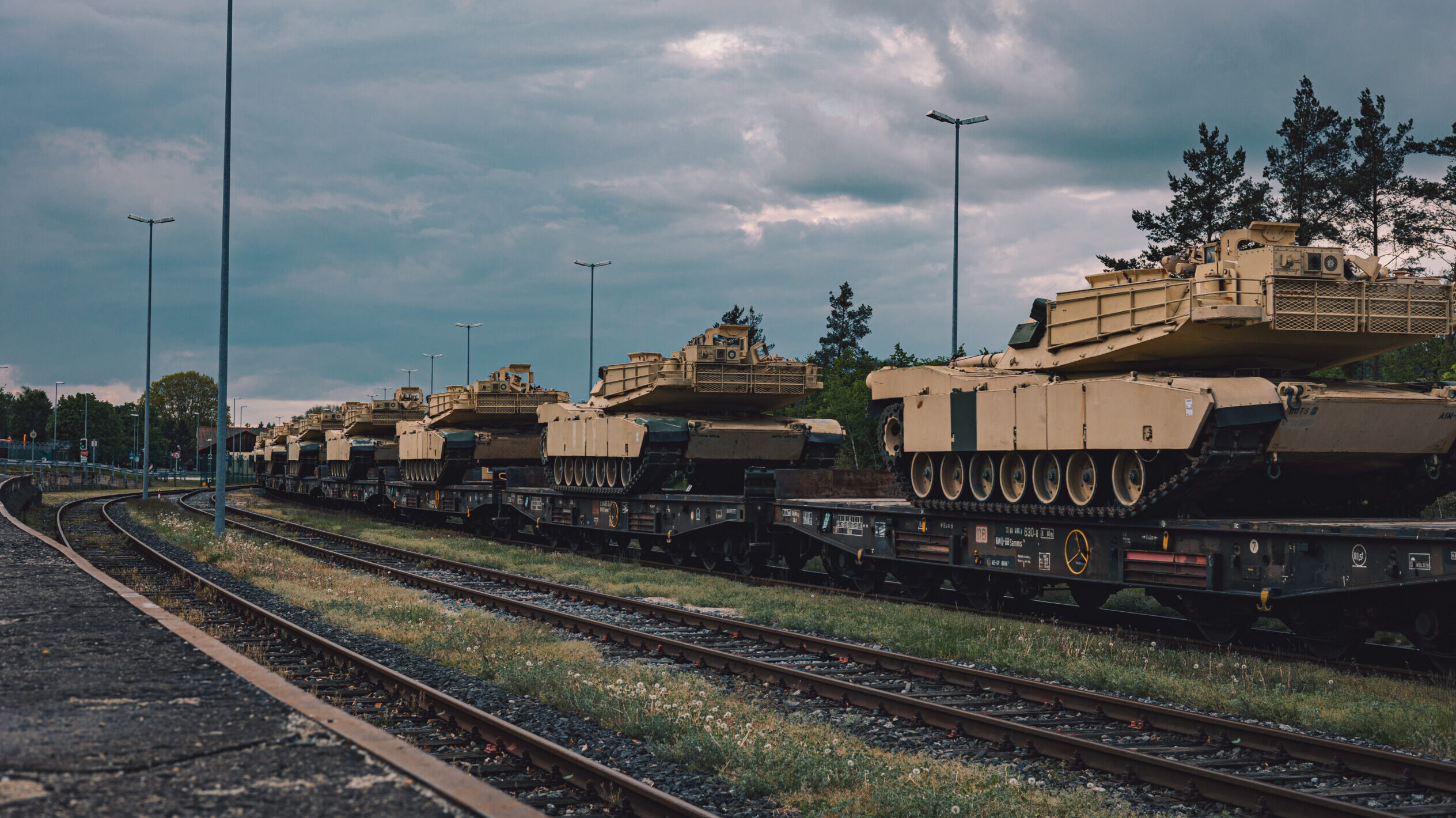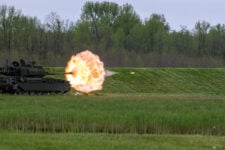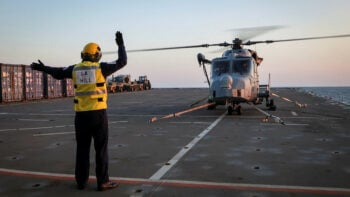
US M1A1 Abrams tanks needed for training Ukraine soldiers arrive by rail at Grafenwoehr, Germany on May 14, 2023. (US Army /Spc. Christian Carrillo)
WASHINGTON — Shortly after the flow of new weapons to the Eastern European nation’s military began adding up, contributing nations began exploring how to help maintain those weapons from a distance. The answer, in part, included the establishment of the Tele-Maintenance Distribution Cell-Ukraine in Poland staffed with people who can help Ukrainian forces fix broken systems via encrypted phone calls or messages.
It’s a relatively new setup for telemaintenance, but one the Pentagon wants to hone and use in the Indo-Pacific region where vast distances and water will test out the US military’s logistics footprint, according to the department’s top acquisition official.
“The Pacific is different than Ukraine, we all know that, and the logistics situation will be very different: the distances are different,” Undersecretary of Defense for Acquisition and Sustainment Bill LaPlante told reporters on Monday during a National Defense Industrial Association conference. “But what we’ve learned, or relearned, is if you need contractors to be there, [that’s] probably not a good idea because you don’t know what the situation is going to be.”
“If it requires contractors or back support in person, even if it’s government, that’s less desirable because you have their lives to worry about,” he later added.
Among other challenges, finding ways to be nimbler requires establishing ways to keep US military and partner nation weapons up and running via calls and texts to specialists. But that is just one piece of the puzzle, LaPlante said. Everything from fuel distribution to identifying islands to forward deploy assets are questions that Pentagon leaders are actively examining.
“We’re looking at every tool, whether it’s telemaintenance or others, that allows us to have a light footprint and to be able to operate through… a hotly contested area,” he added.
Rolling On In Ukraine
Ukrainian forces have now dialed out for help fixing a slew of weapons including Bradley Fighting Vehicles, wheeled Stykers and 155 mm howitzer guns. By the end of the year, 31 Ukrainian-bound M1A1 Abrams tanks will soon join the ranks of weapons sustained from afar, LePlante said.
“There will be the issue of sustaining [Abrams] … parts, but it’s also the expertise, you know, to really understand the equipment and how to debug it,” LaPlante said.
“When you start talking about Abrams, you’re talking about a complex system that you have to constantly attend to and, even without combat, it will not run after so many days, just by not being attended to,” he added.
DoD officials have not disclosed an exact date for when those tanks will arrive inside Ukraine but have said it will be this fall. However, approximately 200 Ukrainian soldiers have now completed one of the last phases of their 12-week Abrams training program — a combined arms, battalion force-on-force exercise — at Hohenfels Training Area and returned to the Grafenwoehr Training Area in Germany to continue honing their skills, Col. Martin O’Donnell, a spokesman for US Army Europe and Africa, told Breaking Defense on Thursday.
“At the request of Ukraine, the soldiers are maintaining their operator and maintenance proficiency until the 31 tanks the US committed to refurbish and to deliver to Ukraine by the fall are ready,” O’Donnell wrote in response to questions. “This proficiency training is expected to occur over a weeks-long period.
“The US is committed to expedite delivery of the 31 tanks to Ukraine by the fall,” he added. “To protect operational security, no further details or timelines will be released, and we will leave it to Ukraine to confirm when the personnel and equipment arrives in Ukraine.”






















